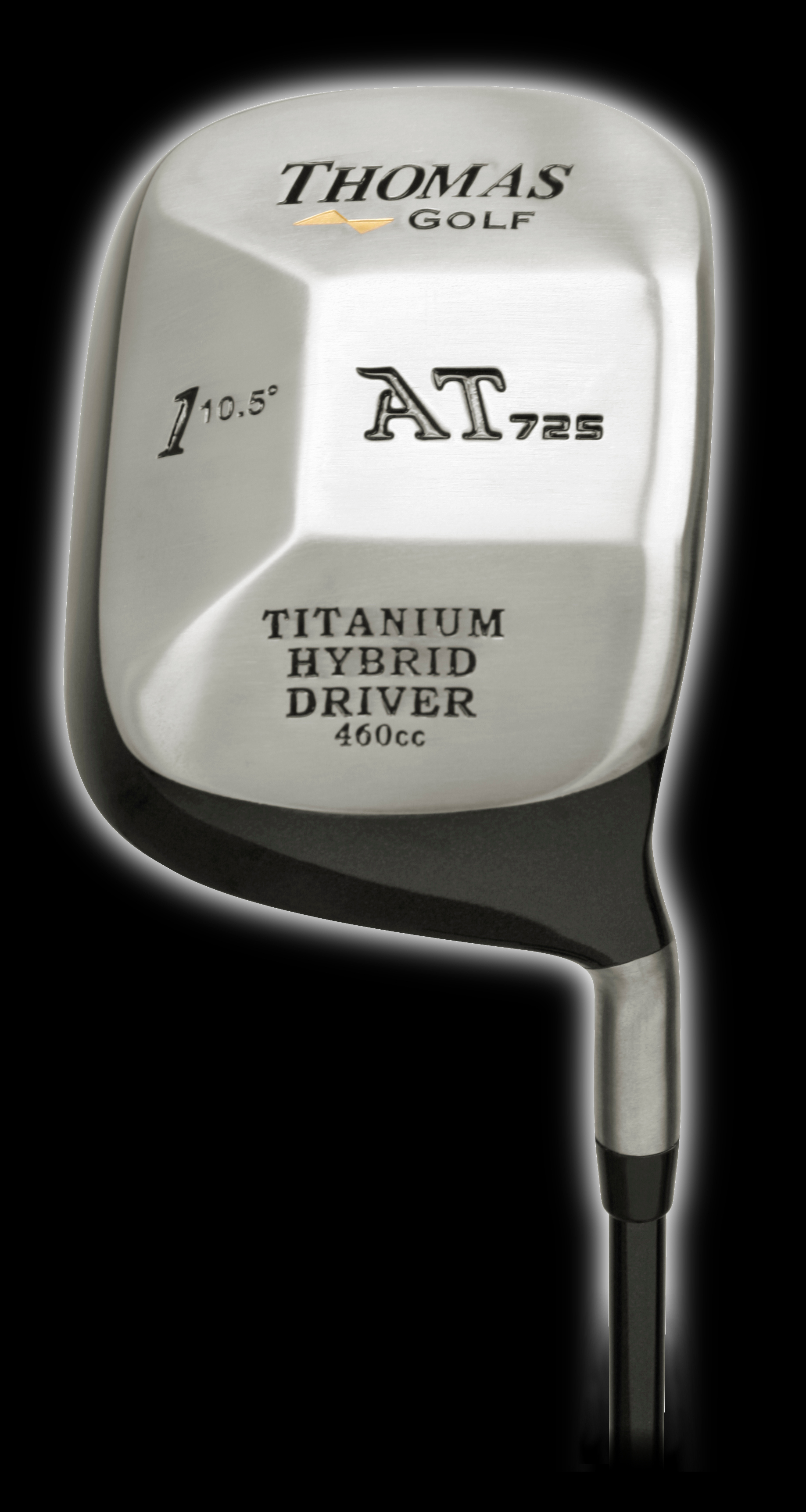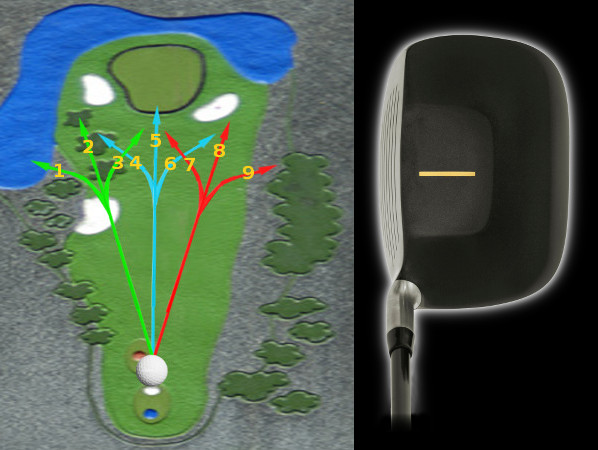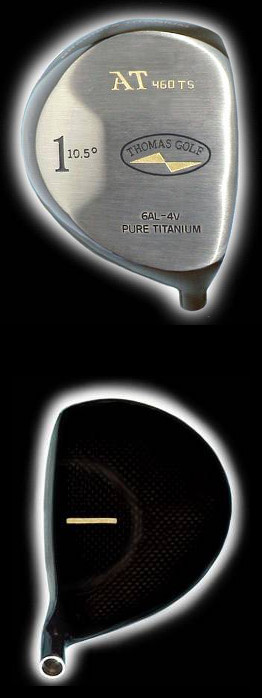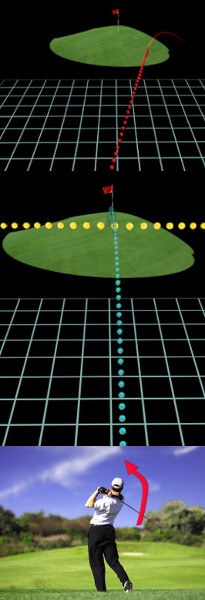
You may have dismissed the idea of getting a driver with an offset hosel because you're not prone to slicing. But guess what?
When it comes to adding distance, little offset can go a long way.
Offset clubs are designed to give golfers an extra split second to rotate the clubface into a square position at impact, which makes them a great anti-slice weapon. But players who hit the ball straight or with a small fade (a left-to-right shot for a right-hander) often find that offset helps them draw the ball. And everyone knows a draw (right-to-left) flies a little lower and rolls a little farther than a fade.
If you're looking for a little yardage boost, or just want a driver you can draw, consider a club with offset.
Thomas Golf's lineup of premium custom clubs includes the AT460 TO Driver, which features a small amount of offset and just might do the trick – without giving you a bad case of the hooks.
Hitting long and straight drives is one of the best things you can do when working toward lower scores.

Of course, this is a goal which nearly every golfer aspires to reach – yet most wind up missing the mark. Simply put, hitting great tee shots is hard, and it is going to take plenty of practice and perseverance to polish your game in this area. Fortunately, you can make this part of golf a little bit easier simply by picking the right equipment for your needs.
In this article, we are going to talk about offset drivers. We will explain what an offset driver is, and how it may be able to help you. As you might expect, these kinds of clubs are not right for all players, so we'll also explain who should avoid them. You should never look to equipment to solve all of the problems you have on the course, but it is possible to make the game easier by matching your equipment to your swing. If you are using the wrong gear, you will be taking a hard game and making even harder.
It should be noted that improving your play off the tee is not only about hitting the ball farther. Adding distance to your average drive is great, but only if you have the accuracy to go with it. If there isn't much control in your driver game, those long tee shots are only going to take you further into trouble. You should always prioritize accuracy over distance, as playing from the short grass is the fastest way to achieve lower scores.
The good news here is that an offset driver may be able to help you on both of these fronts. If you are a good candidate for an offset driver, you may find that your tee shots fly both straighter and farther when you make the switch to this type of club. It isn't often that you have the opportunity to improve your control and your distance at the same time, which is why looking at an offset driver is such a worthy idea.
All of the content below is based on a right-handed golfer. If you happen to play left-handed, please take a moment to reverse the directions as necessary.
What is an Offset Driver?

Before you can decide whether or not an offset driver would be a good choice for your bag, you need to first understand what this club is, and how you can spot one on the shelves at your local pro shop. An offset driver features a club head which is set back slightly from the shaft, as you look down from address. So, for a right-handed golfer, the club head is going to sit a bit farther to the right at address, as compared to a traditional driver. If you have only ever used a driver with no offset, this type of club will look rather strange at first. Don't let that strange look send you running in the other direction, however – you should still take time to determine whether or not an offset driver can help your game.
So, why would golf club manufacturers build offset drivers in the first place? Let's take a look at some of the potential advantages they can provide.
- Giving you more time. The main reason that the club head is set back from the shaft is to give you more time to square the face of the club to the target line before impact arrives. Of course, this 'extra' time you will be given is just a fraction of a second, but that may be all you need. If you tend to leave the face hanging open at impact – frequently resulting in a slice – using an offset club may help you square up the face properly. Or, at least, you may get closer to a square position, reducing the amount your ball curves in the air. Many golfers are surprised to find how effective the offset can be in helping them square the face of the driver prior to making contact with the ball.
- Picking up distance. We mentioned in the title of this article that using an offset driver may help you find those long draws off the tee that so many golfers covet. And, it is true – using an offset driver may help you pick up additional yardage down the fairway. Mostly, this is going to happen because you should be able to straighten out your ball flight. With the ball curving less as it flies, the power you put into the shot will be more efficiently converted into distance. You want your golf ball to be using energy moving toward the target, not curving from side to side across the fairway. With an offset driver, your shots may fly straighter – and straighter shots are almost always going to travel farther in the end.
- Avoiding a swing change. One of the often-overlooked selling points of an offset driver is simply the fact that using one may allow you to avoid a time-consuming swing change. For instance, if you are hitting a slice off the tee, you may need to take a long period of time to rebuild the fundamentals of your driver swing. You may be able to get rid of your slice this way, eventually, but there is going to be a lot of hard work between here and there. If you are looking for a shortcut, or if you simply don't have the time available in your schedule to practice, opting for an offset driver could be a nice solution. This piece of equipment can help you to square the face without making a swing change, leading to better results almost immediately. This style of club is not going to work for all golfers who struggle with the slice, but for many, it is at least worth a try.
While an offset driver looks quite a bit different than a regular driver from address, these two types of clubs actually have a lot in common. Aside from the offset design of the head, the rest of the club is very similar – if not exactly the same. Keeping that in mind, it shouldn't be so intimidating to try one out for yourself. After just a few swings, you should begin to get comfortable with how this type of driver feels as it swings through the hitting area. From there, it will simply be a matter of deciding whether or not what an offset driver brings to your game is going to help you play better golf out on the course.
Are You a Good Candidate?

Before you rush out to purchase an offset driver, it is worth taking a moment to think about whether this type of club is likely to improve your play. Not all golfers who struggle off the tee should go in this direction, since the benefits of offset are only going to help with specific swing issues. There are a variety of types of clubs out there on the market, and it may be that an offset model just isn't the right choice.
To help you decide whether or not an offset driver is right for you, please review the points below.
- You hit a slice. This is the big one, so it needs to be addressed right off the top. If you struggle with a slice off the tee, an offset driver is something that you should seriously consider. As was mentioned in the previous section, using this type of club can provide you with a little extra time to square up the face at impact. If you are hitting a slice, you're leaving the face open, and the ball is spinning off to the right. An offset driver might not completely correct your flight problem, but it should help you to at least find a straighter path down the fairway. For instance, rather than hitting a big slice, you may see most of your drives turn into a modest fade. That would be a huge improvement, and it would likely lead to lower scores when all is said and done.
- You hit the ball too low. Are you struggling to get your drives up off the ground? If low tee shots are common in your game, an offset driver may again be able to come to the rescue. You'll be moving the center of gravity a little farther back from the club shaft, which might help to raise your trajectory. There is no guarantee that it will play out this way in your game, but it's something to consider. If you've been trying everything else you can think of to hit higher drives, giving offset a try is worth a shot.
- You never hit a hook. It needs to be said that using an offset driver when you already hit an occasional hook is a bad idea. If you have been known to hook the ball to the left from time to time, it is probably best that you stay away from this type of driver. Again, we come back to the point of having more time to close down the face. This is great for a player who tends to leave the face hanging open, but that is not what's happening for a golfer with a hook. When you hit a hook, the face of the club is closed relative to your swing path – and probably closed in relation to the target line, as well. So, if you were to use an offset driver when already hitting a hook, the likely result would be ugly. You'd have more time to work the face into a closed position, which would only increase the severity of your right to left flight. It is hard enough to fix a hook when you have the right equipment in hand – don't make things worse by picking up an offset driver.
If the three points above don't cause you to cross the offset driver off your shopping list, you just may be a good candidate for this type of club. Most of the players who find the offset driver useful are those who typically hit low slices. By reducing the slice and raising the ball flight, an offset driver can work wonders for this type of golfer.
At this point, we do want to stop for a moment to discuss the overall health of your golf swing moving forward. The idea behind an offset driver is to take the swing you are currently using and extract the best possible results. Instead of changing your swing, you are going to change your equipment and see where that takes you. This is a reasonable enough plan, but it is not without its faults. Namely, you aren't going to be addressing the underlying issues in your swing anytime soon. You'll be reliant on the offset driver to help you produce decent tee shots, as you aren't going to be fixing your swing to make that happen.
You can look at this point from both sides. On the one hand, the average recreational golfer doesn't have the time to completely overhaul his or her swing. Countless players struggle for their entire golfing lives with a slice, so why not make the most of it? There is something to be said for this type of thinking, and it should not be discounted. On the other hand, if you hope to greatly improve your play as the years go by, you may want to take the time now to fix your technique. By getting rid of the habits that produce a slice, you can look forward to a brighter future on the links – without needing the help of something like an offset driver.
In the end, this is your decision to make. There is nothing wrong with using an offset driver, and for many players, it is a great option. If you know that you won't be able to dramatically change your swing technique anytime soon, it is a smart move to use the equipment that is going to lead to the best possible results.






